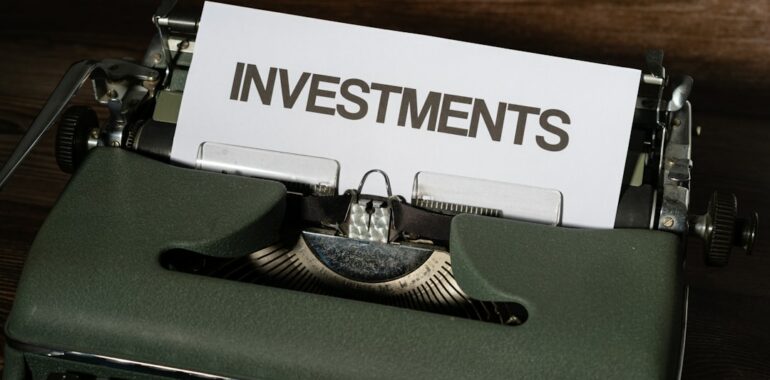Comprehensive Guide to Tax-Efficient Investing with SEIS and EIS

Meta Description: Discover how SEIS and EIS can optimize your investment returns and reduce tax liabilities. Explore our comprehensive guide on UK investment tax incentives for smarter, tax-efficient investing.
Investing wisely involves not only selecting the right opportunities but also leveraging strategies that minimize tax liabilities. In the UK, tax-efficient investing has gained prominence, particularly through schemes like SEIS (Seed Enterprise Investment Scheme) and EIS (Enterprise Investment Scheme). This guide delves into how these schemes can help you maximize your investment returns while minimizing your tax burden.
Understanding Tax-Efficient Investments
Tax-efficient investments are designed to offer investors significant tax benefits as an incentive to invest in qualifying companies or investment vehicles. These opportunities are especially beneficial for those looking to grow their wealth while reducing their tax liabilities. The UK government introduced these schemes to stimulate investment in small businesses and innovative enterprises, thereby fostering economic growth.
SEIS and EIS: An Overview
SEIS and EIS are two primary schemes that provide substantial tax reliefs to investors. Both are aimed at early-stage companies, but they cater to different investment amounts and offer varying levels of tax benefits.
- Seed Enterprise Investment Scheme (SEIS):
- Tax Relief: Investors can claim up to 50% income tax relief on investments up to £100,000 per tax year.
- Capital Gains: Any gains from the sale of SEIS shares are tax-free.
-
Loss Relief: If the investment fails, investors can offset losses against their income tax.
-
Enterprise Investment Scheme (EIS):
- Tax Relief: Investors can claim up to 30% income tax relief on investments up to £1,000,000 per tax year.
- Capital Gains Deferral: Capital gains can be deferred by reinvesting them into EIS.
- Tax-Free Growth: Any growth in the value of the shares is free from capital gains tax.
These schemes not only provide tax reliefs but also offer avenues for high-growth potential investments, making them attractive for both novice and seasoned investors.
Benefits of SEIS and EIS
Maximizing Returns
SEIS and EIS open doors to high-growth potential investments. By investing in early-stage companies with innovative ideas, investors stand to gain substantial returns as these businesses expand and succeed.
Minimizing Tax Liabilities
The primary appeal of SEIS and EIS lies in the tax reliefs they offer. These schemes allow investors to reduce their income tax bills and defer or eliminate capital gains taxes, effectively enhancing net returns on investments.
Diversification
Investing through SEIS and EIS allows for portfolio diversification. By allocating funds to a variety of early-stage companies, investors can spread their risk across different sectors and industries.
Estate Planning
For those looking to pass on wealth, SEIS and EIS investments can be strategically used to minimize inheritance tax liabilities, ensuring that more of your wealth is transferred to your beneficiaries.
Risks to Consider
While SEIS and EIS offer attractive benefits, it’s crucial to acknowledge the inherent risks:
- High Risk Profile: Early-stage investments come with a higher risk of failure compared to established companies.
- Liquidity Concerns: It may be challenging to sell shares in private companies, leading to potential liquidity issues.
- Regulatory Changes: Tax relief benefits are subject to change based on government policies and regulations.
Investors should thoroughly assess their risk tolerance and consult with financial advisors before committing to these schemes.
Strategies for Tax-Efficient Investing
Start Early
Maximizing the benefits of SEIS and EIS is easier when you begin investing early. Take advantage of annual allowances and spread investments to optimize tax reliefs over multiple years.
Diversify Your Portfolio
Avoid putting all your eggs in one basket. Diversifying your investments across various sectors and stages of business development can mitigate risks and enhance potential returns.
Reinvest Capital Gains
Utilize capital gains deferral by reinvesting gains into EIS. This strategy not only defers your tax liabilities but also allows your investments to grow tax-free.
Leverage Professional Advice
Navigating SEIS and EIS can be complex. Engage with professional advisors to tailor a tax-efficient investment strategy that aligns with your financial goals and tax situation.
Leveraging Oriel IPO for Tax-Efficient Investments
Oriel IPO stands out as a champion for tax-efficient investing by connecting investors with entrepreneurs through SEIS and EIS opportunities. Their platform democratizes investment, ensuring accessibility for both experienced and novice investors without the burden of commission fees.
Key Features of Oriel IPO:
- Commission-Free Platform: Invest without additional costs, maximizing your capital allocation.
- Robust Community: Engage with a network of like-minded investors and entrepreneurs.
- Educational Resources: Access comprehensive guides, tax calculators, and insights to make informed investment decisions.
- Secure Marketplace: Ensure your investments are protected within a trusted environment.
By fostering a strong community and providing essential tools, Oriel IPO addresses common barriers to investment, such as high costs and complexity, making tax-efficient investing more approachable and transparent.
Conclusion
Tax-efficient investing through SEIS and EIS offers a compelling opportunity to enhance your investment portfolio while significantly reducing tax liabilities. By understanding the benefits and risks, and leveraging platforms like Oriel IPO, investors can strategically navigate the investment landscape to achieve their financial goals.
Ready to take the next step in your tax-efficient investment journey? Visit Oriel IPO today and unlock the potential of SEIS and EIS to maximize your returns and minimize your tax liabilities.




